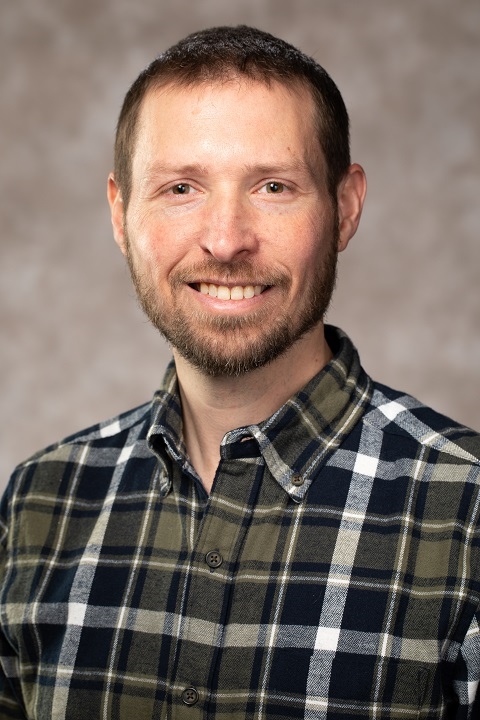Researchers Develop Method to Assess Geographic Origins of Ancient Humans
FAYETTEVILLE, Ark. – Working with lead isotopes taken from tooth enamel of prehistoric animals, researchers at the University of Arkansas have developed a new method for assessing the geographic origins of ancient humans.
John Samuelsen, doctoral candidate in anthropology and research assistant at the Arkansas Archeological Survey, analyzed linear patterning of lead isotopes on teeth from a 600- to 800-year-old skull and mandible cemetery at the Crenshaw site in southwest Arkansas. The new method allowed the researchers to compare the ancient human teeth to those of prehistoric animals, as well as rocks and soil samples, taken from the same area.
The research, sponsored in part by the National Science Foundation, was published in the Journal of Archaeological Science.
The Crenshaw site along the Red River is a culturally significant multiple-mound ceremonial center of the Caddo Indians. Previous studies have yielded conflicting interpretations of what the human skulls and mandibles reflect. Some research suggests the remains belonged to victims of violence who came from outside the region, while other research suggests the remains represent a local Caddo Indian burial practice of their own ancestors.
Samuelsen emphasized that a full evaluation of the human remains will be addressed in a future study, but he and Potra found that teeth of five of the 352 individuals tested with the new method contained isotopic signatures consistent with those found in the teeth of prehistoric animals from several sites in the area. Moreover, their isotopic signatures were inconsistent with isotopes from humans and animals from other regions.
“While our focus in this article is to establish a method for using lead isotopes to evaluate ancient human geographic origins,” Samuelsen said, “this does suggest that at least these five individuals were from southwest Arkansas.”
Lead is a toxic trace metal that affects the health of biological organisms, but it is useful for determining geographic origins. Its isotopic content within human and animal tooth enamel, via food chain pathways, reflects the geology of the region in which an organism grew up. While the lead isotopes from animal teeth were successful at identifying local human remains, versus those from other geographical areas, those isotopes taken from nearby rocks were far too variable to be useful for the same purpose, Samuelsen said. Rock analysis was done by Adriana Potra, associate professor of geosciences, who co-authored the paper.
A major research concern with lead isotope studies is modern, human-caused lead contamination found on soil, rocks and human and animal remains. If modern lead from gas, mines or industrial sources has contaminated the remains, then the lead isotopes will not reflect their original locations. Even if they are uncontaminated by modern lead, the natural soil contains lead that can affect the results similarly. For these reasons, the researchers’ study used three different methods to assess contamination and provided recommendations for future research.
With these concerns in mind, the researchers performed isotopic work within the metal-free, modular Radiogenic Isotope Laboratory, a “room inside a room” clean lab at the University of Arkansas. The isotopic and trace element data were collected at the Trace Element and Radiogenic Isotope Laboratory, with help from Erik Pollock, scientific research technician in the Department of Biological Sciences, and Barry Shaulis, research associate in the Department of Geosciences. High accuracy isotopic data were collected on a multi-collector, inductively coupled plasma mass spectrometer. Drilling of teeth was performed with a Leica M80 binocular microscope, housed by Celina Suarez, associate professor of geosciences.
The research project is supervised by George Sabo, director of the Arkansas Archeological Survey. Sabo is Samuelsen’s graduate advisor. The research was funded by the Department of Anthropology and the Arkansas Archeological Society, in addition to the National Science Foundation. The study is being conducted in collaboration with the Caddo Nation of Oklahoma to help answer questions the tribe has about the cultural affiliation and origin of the remains.
About the University of Arkansas: The University of Arkansas provides an internationally competitive education for undergraduate and graduate students in more than 200 academic programs. The university contributes new knowledge, economic development, basic and applied research, and creative activity while also providing service to academic and professional disciplines. The Carnegie Foundation classifies the University of Arkansas among fewer than 2.7 percent of universities in America that have the highest level of research activity. U.S. News & World Report ranks the University of Arkansas among its top American public research universities. Founded in 1871, the University of Arkansas comprises 10 colleges and schools and maintains a low student-to-faculty ratio that promotes personal attention and close mentoring.
Topics
Contacts
John Samuelsen, doctoral student, anthropology
J. William Fulbright College of Arts and Sciences
479-575-4246,
jsamuel@uark.edu
Matt McGowan, science and research communications officer
University Relations
479-575-4246,
dmcgowa@uark.edu
Headlines
Four Students Named Goldwater Scholars; Two Earn Udall Honorable Mentions
Four U of A students have received the prestigious Goldwater Scholarship, an award for top students in mathematics, science, and engineering.
Cross-Campus Collaboration Culminates in New Outdoor Geological Installation
Grand opening event to celebrate the new GeoLab installation at the U of A’s Gearhart Hall courtyard is set for May 3. The installation will be open to the public year-round.
First Students to Use Online Degree to Hone Nursing Leadership, Elevate Patient Care
Hanna Baxendale and Wendi Kimbrell will begin coursework in the Doctor of Nursing Practice-Executive Master of Business Administration program offered by the Eleanor Mann School of Nursing and Walton College.
Join the Office for Sustainability on a Final Cruise to Campus
Cruise to Campus Wednesdays have fostered a gathering space for individuals interested in biking to campus. Drop by the Old Main Lawn from 7:30-10 a.m. Wednesday for coffee, something to eat and conversation.
Fay Jones School Student Ambassador Program Gives Voice to Design Students
The student ambassador program at the Fay Jones School of Architecture and Design is built to connect top design students with their school, its alumni, its future students and others inside and outside the school.





